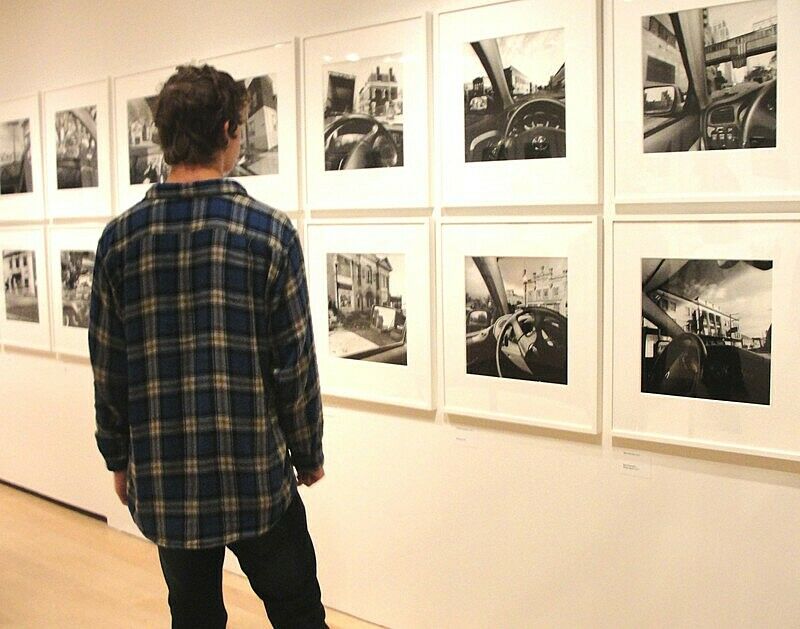Art on Second Thought
Oct 4, 2010
During his first look at the exhibition, Lee Friedlander: America by Car, YI Leader Henry found himself having mixed reactions. But he also knows that first impressions aren't always the last. Such was the case when Henry recently re-encountered the work of John Singer Sargent, an artist whose work he once didn't care for. Here is his blog post about giving art a second (and third and maybe even fourth) chance.
The Whitney owns two works by John Singer Sargent, one of which is a charcoal drawing on paper of the museum's founder, Gertrude Vanderbilt Whitney.
For years now I’ve been hearing about this guy, John Singer Sargent, my dad’s favorite artist. Everyone in the family seems to be a big fan, so I’ve heard the name tossed around quite a few times and have even seen a fair amount of his work. Frankly, until recently, I wasn’t very impressed. The first time I got a glimpse of Sargent’s work I was probably far too young to appreciate it at all. As I got older I had other experiences viewing his paintings and was still struck with no emotions other than disinterest and boredom. Nothing seemed special or unique; he just looked like your typical, traditional portrait painter.
For my father's birthday this past summer, I got him a special gift: an illustrated hardcover book detailing Sargent’s life and work. My dad loved it, and, since then, it has taken up permanent residence on our dining room coffee table. Even so, I still felt no love for Sargent and his work, and really all I wanted to do was avoid his work or a book about his work. Finally, after a day of extreme boredom, I sat down and flipped my way through a couple pages of this book about Sargent. What I found astounded me. I expected the same boring and typical paintings I had seen only a couple of years before. Instead, I found Sargent’s works couldn’t be more different than as I last recalled them. I found his depictions to be powerful and remarkably realistic.
What draws me into his work is the way his paintings are often in focus at the center of the subject but tend to lose definition as the image nears the boundaries of the composition. While this seems like a relatively simple technique, it actually livens the sketches and imitates the effects of peripheral vision to give the works a more realistic look. Sargent’s paintings appear like real objects suspended in some kind of 2D vacuum. He is famous for his portraits, particularly because the characters he painted almost always hold a fascinating look in their eyes.
Though Sargent does, in many ways, adhere to a traditional style of portraiture, his paintings also display a style completely unique to him.
By Henry

